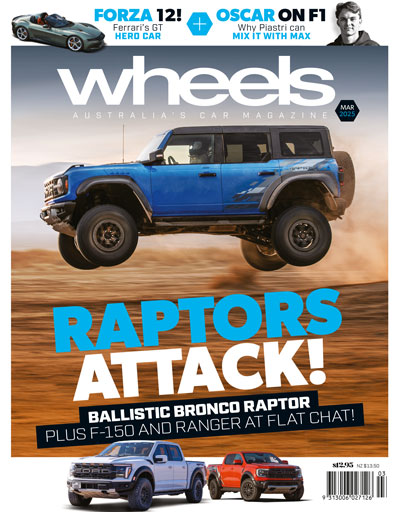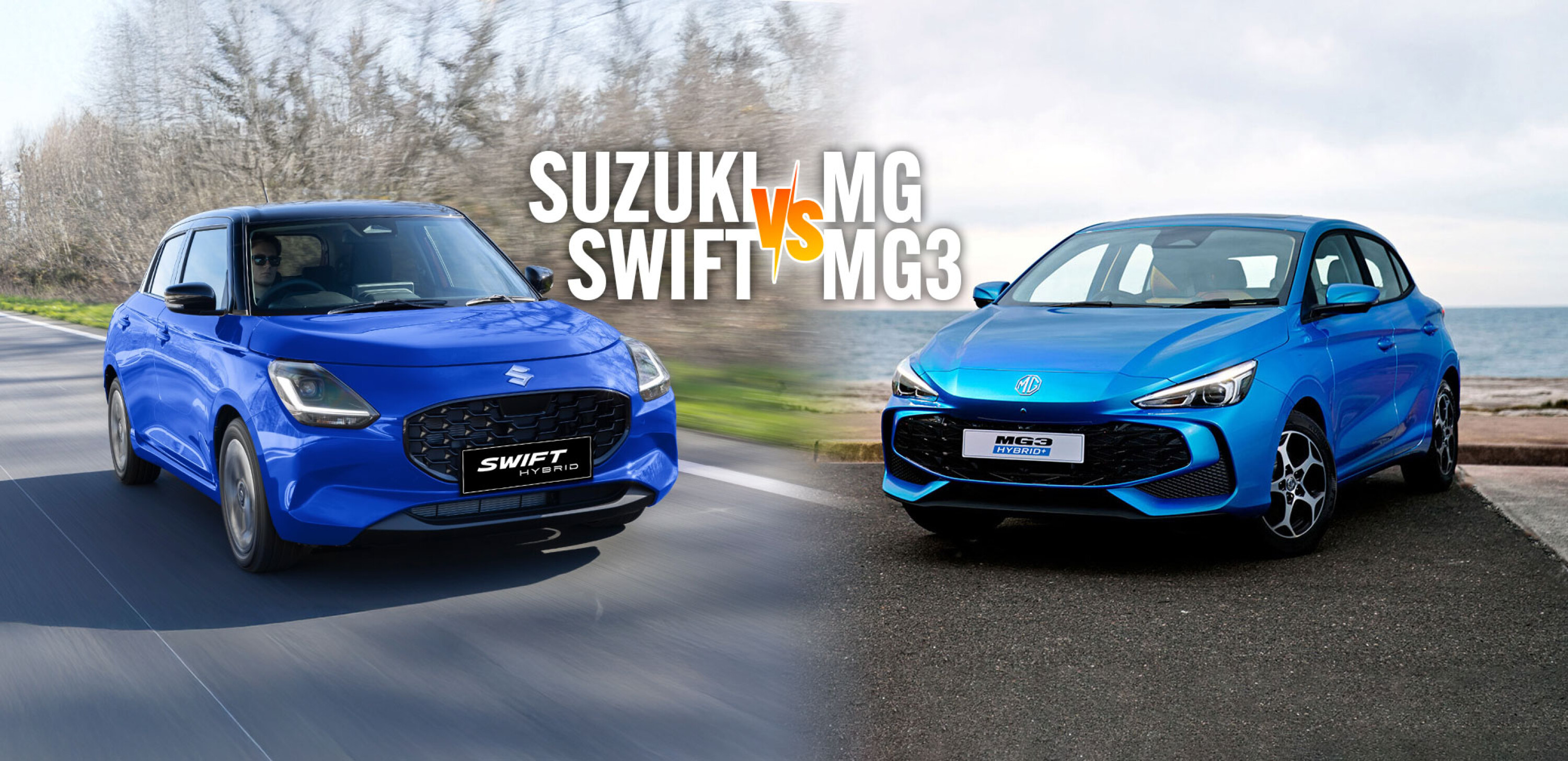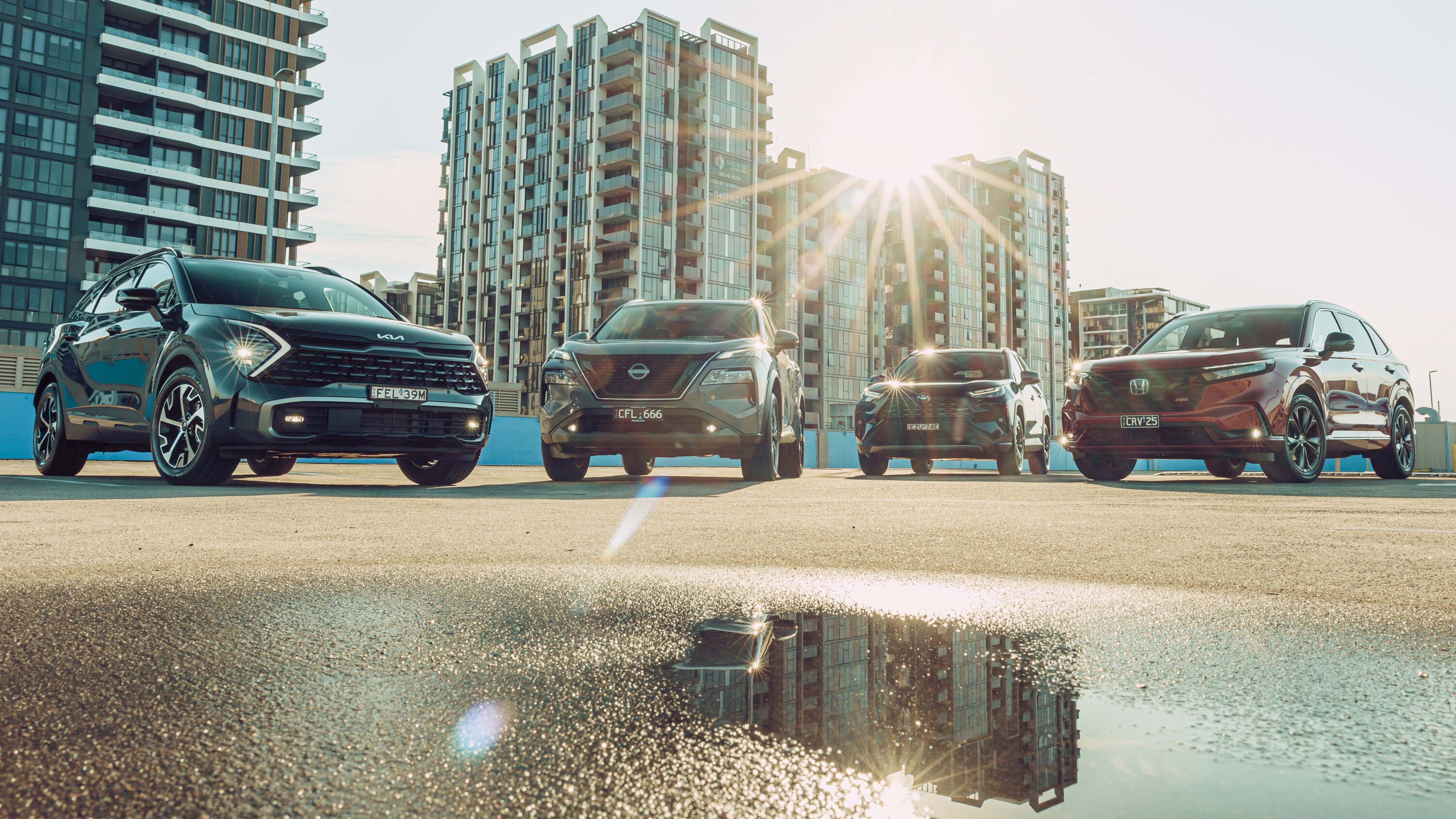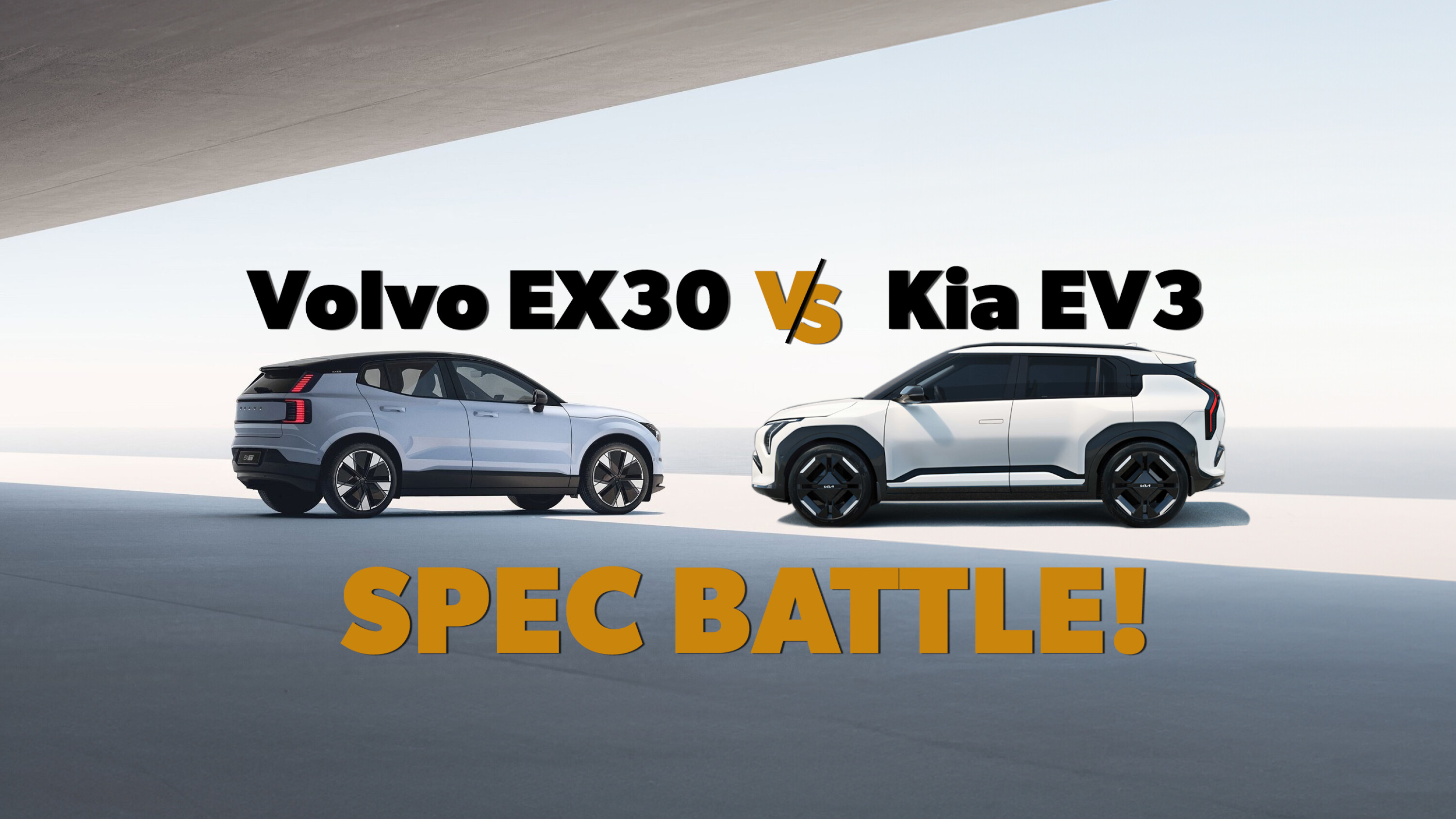Can the turbocharged, top-spec Hyundai Tucson Highlander run with the best of the medium SUV bunch, when each is in its most powerful form?
Can’t wait to see the final scores? Jump to the verdict now.
THERE’S plenty of irony in Hyundai choosing to revive the Tucson nameplate for its new-generation medium-size ‘soft-roader’. While the exhumed title is Apple Pie to the core, and Tucson’s interior has a Californian twang courtesy of Hyundai’s Irvine design studio, the remaining collaborators read like a semi-final for Eurovision.
One-time Audi stylist and purveyor of Kia’s recent design savvy, Peter Schreyer, has lent his German aesthetic to the exterior, while Hyundai’s Czech factory handles the nuts and bolts (unless you’re buying an Active X variant, in which case your Tucson still hails from South Korea). But Australia lent a hand as well. Recognising that fun-to-drive DNA should be part of Hyundai’s brand character, this distinctive new locally tuned SUV delivers the dynamic entertainment to bolster its sharp-looking new suit.
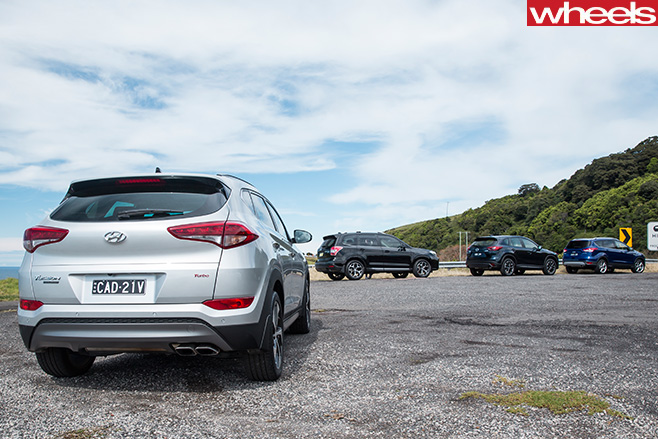
Three turbos, one biggie
Given Hyundai’s ‘driver’s car’ claims, we headed straight for the petrolhead variants. Tucson’s sporting polish gleams brightest in range-topping Highlander AWD spec, packing a detuned version of the Veloster coupe’s 1.6-litre direct-injection turbo four, tied to a seven-speed dual-clutch transmission. Hyundai asks $43,490 for the privilege, placing the top Tucson eye-to-eye with the Mazda CX-5 Grand Touring ($43,390), Ford Kuga Titanium ($44,990) and Subaru Forester XT Premium ($47,990).
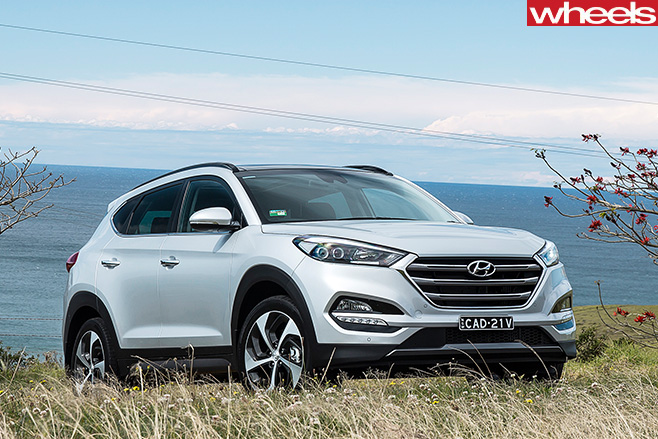
In comparison, Mazda’s freshened CX-5 looks proudly Japanese. No matter where you look, its new-for-2015 details – grille, lights and wheels, as well as a much prettier dashboard – have enhanced its visuals considerably, in contrast to the dead-ringer appearance of the MY15 Forester. If only Subaru invested some time adding techy sparkle to the boxy Forester’s dated headlights, and less chintz to its dorky grille, people may want to buy it simply for the way it looks.
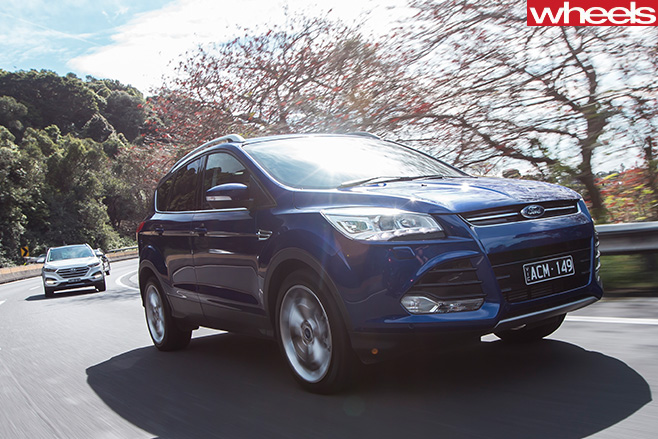
But looks can be deceptive. Beneath the Kuga’s creased bonnet resides one of Ford’s best engines. Packing a solid 178kW, backed by 345Nm from 2000-4500rpm, the 2.0-litre turbo-petrol four is a vast improvement over the underwhelming 1.6 turbo still fitted to the base Ambiente, and its sweetly throaty induction growl is the perfect accompaniment for the Kuga’s hot-hatch-like performance.
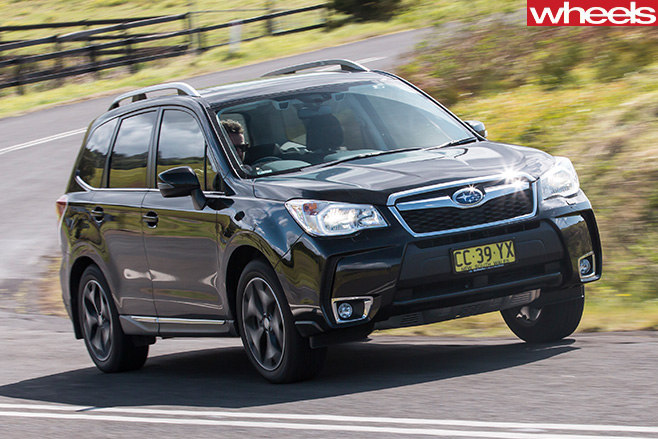
Still, the spritely Kuga can’t quite match the deceptively brisk Forester XT. While 2015’s CVT-equipped generation isn’t quite as rapid as lighter models of yesteryear, the turbo Forrie’s seven-dead to 100km/h isn’t hanging about. And it gets there with impressive smoothness, its tacho needle rigid at 5800rpm as it surges ahead with just a faint hint of horizontally opposed character from its 177kW/350Nm 2.0-litre flat-four.
Sweet and addictive
Interestingly, Subaru’s steering wheel-mounted ‘SI-Drive’ system – with Intelligent, Sport and Sport# modes – has never worked as well as it does in the Forester XT. Finally, eco-minded Intelligent has enough turbo-boosted torque to work with, backed by Subaru’s excellent ‘Lineartronic’ CVT transmission, to make it a viable option for general driving. Sport perks up throttle response and adds meat to the steering weight, while Sport# introduces eight artificially inserted steps into the ratio set and combines neatly with the XT’s wheel-mounted paddles to provide engine braking in corners. But Forester accelerates quicker in regular CVT mode.
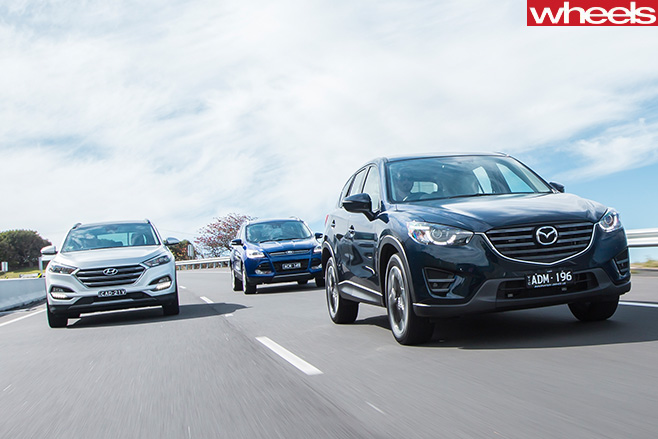
Thanks to the strength of the competition, the turbo Tucson has its work cut out, even running an up-to-date drivetrain. Tipping the scales at a solid 1690kg (64kg more than the CX-5) and with only 130kW against the 2.5-litre Mazda’s 138kW, the Hyundai relies on its seven tight ratios, rapid dual-clutch upshifts and the breadth of its torque – 265Nm from 1500-4500rpm – to marginally outpace the eager Mazda. But in its upper reaches, the Tucson’s engine starts to sound a bit strained, which is at odds with its slick around-town demeanour.
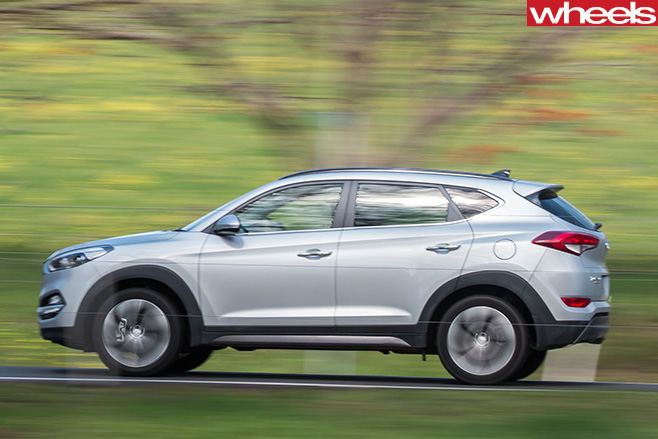
There’s agility, and then there’s finesse
Same goes for its dynamics. Hyundai Oz worked hard at achieving both ride and handling excellence with the Tucson and for the most part they’ve succeeded.
With the console-mounted Drive Mode button switched to Sport, which improves the consistency of its steering weighting considerably while perking up the transmission’s shift mapping, the Tucson is unexpected fun to drive. Its chassis has an innate sense of poise, with the ability to interact via its rear-end to adjust its angle of cornering attack. Yet, thanks to the trustworthiness of its connection with the road, and the marvellous grip from its Continental rubber, you can really throw the Tucson around, without ESC trying to hobble your fun. It has great turn-in, too, and a pleasingly thin-rimmed steering wheel clad in quality leather.
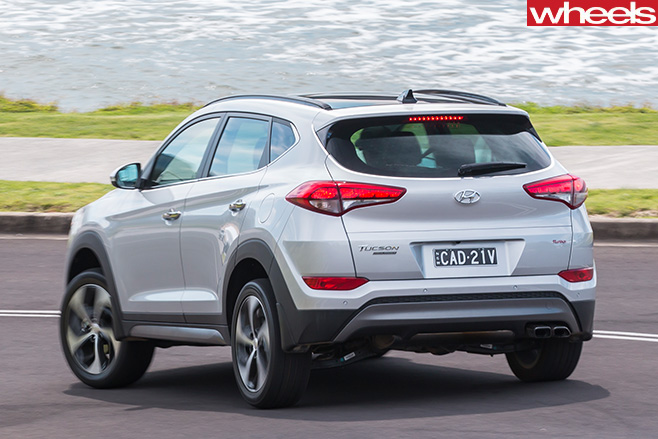
Then there’s Tucson’s engine, which tries hard but lacks inspiration, and its transmission, which won’t downshift early enough when calling for engine braking into a corner. And its brakes, which performed a pair of brilliant 34.9m stops from 100km/h at the strip but became quite whiffy during our back-to-back runs.
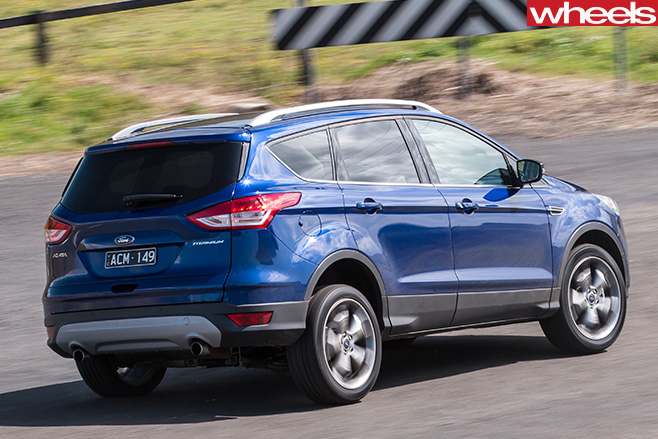
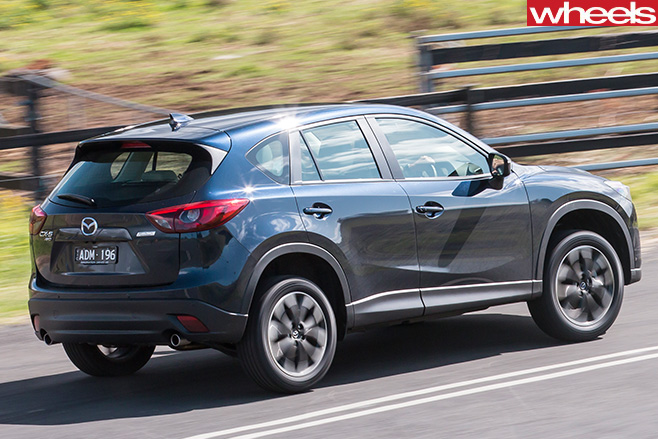
Backed by a super-responsive drivetrain, if you set up the CX-5 by rolling some weight onto its back end, she’s as agile as the best of them, with a surprising amount of oversteer allowed by the ESC before it nibbles at the edges. The CX-5’s retuned electric steering is a lot more consistent in its weighting than it used to be, and its 225/55R19 Toyos grip pretty well, though they produce a lot more tyre squeal than the excellent Continentals worn by the Hyundai and Ford.
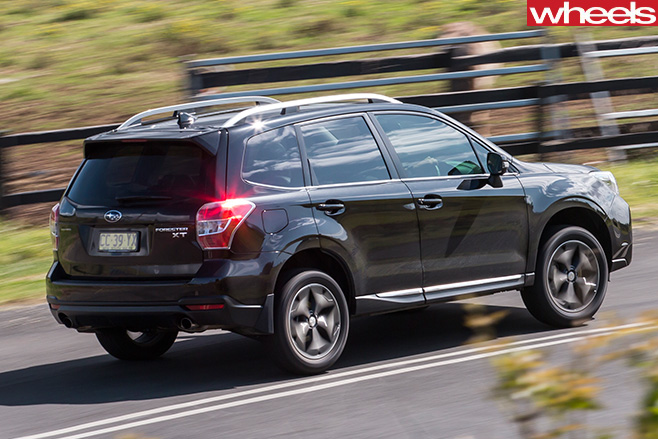
The more deftly you drive the Forester, and the greater your commitment, the stronger its ability. It has tremendous drive out of corners and, while it rolls a fair bit, it’s a hoot to play around with. Pity you drive on what its chassis says, though, and not its steering. Even in weightier Sport or Sport# mode, the Forester’s tiller lacks the crispness of its rivals, Tucson included.
Bump or body control?
But when the going gets tough, boy does it ride. Over our punishing four-up section, the Forester made a mockery of all surfaces, blotting bumps while remaining level and smooth, backed by decent refinement, as well as nuanced and keen handling. Add outstanding vision and a great drivetrain and the whole exercise seemed like a walk in the park.
For body control and all-round confidence, the Kuga shines, though it doesn’t gift its passengers with the same level of suppleness the Forester does. It’s the Hyundai that comes closest to matching the Subaru’s comfort, and in low-speed situations on better roads, it’s actually the better of the two. But it transmits more road noise than the Ford on the same tyres.
The firmer Mazda also has better body control than the Hyundai, but unlike the Euro Ford, it can’t match the supple nuance of the Korean’s Aussie-tuned chassis. The CX-5 can feel a bit stiff-legged over sharp bumps and, in contrast to the Tucson and Kuga, fails to give the impression of a completely happy union between its pretty 19s and its suspension tune. Seated up front, its Toyos are quieter than the Tucson’s Contis, but nothing can out-hush the Forester.
An ace on the inside
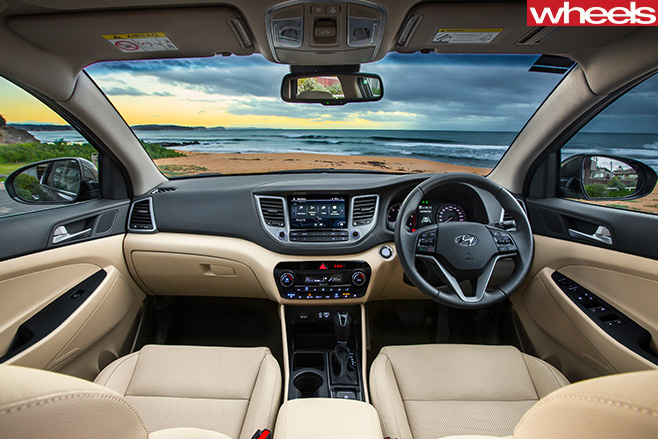
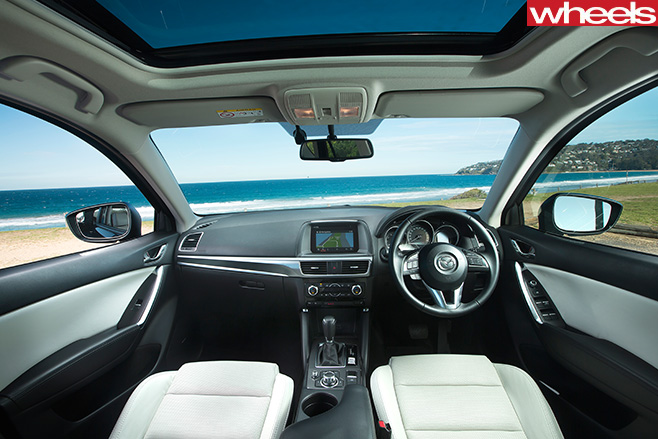
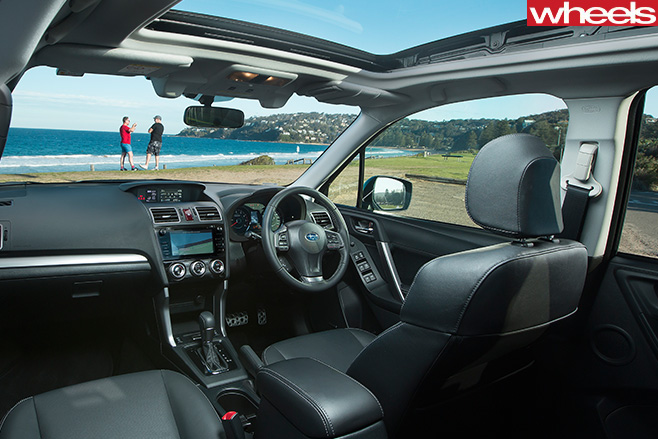
The Subey doesn’t have the greatest seats in the world, either, particularly for lateral support, but on a long trip its comfort, and the incredibly airy feel of its low window line and deep windscreen, are a blessing. We also love the Forester’s new multimedia set-up, and its Harman Kardon stereo is a bass-cranking beauty.
So, which has the edge overall?
Yet there’s something deeply compelling about the XT Premium’s pragmatism. And beneath its practical sense is a fast, refined, roomy, entertaining SUV with enough runs on the board to guarantee near-faultless operation and strong resale, despite its $48K ask. We’d fit better tyres, but the Forester is an SUV that will keep on giving if you don’t mind the look.
The Tucson may not have the Subaru’s badge cred, or its ultimate composure, but for 98 percent of the time this handsome slice of German-inspired SUV is about as far from its American naming roots as possible. It’s nicely built, cleverly packaged, comfortable, practical, and fun to drive, with the polish its ix35 predecessor lacked. But is it better than the CX-5 and Kuga?
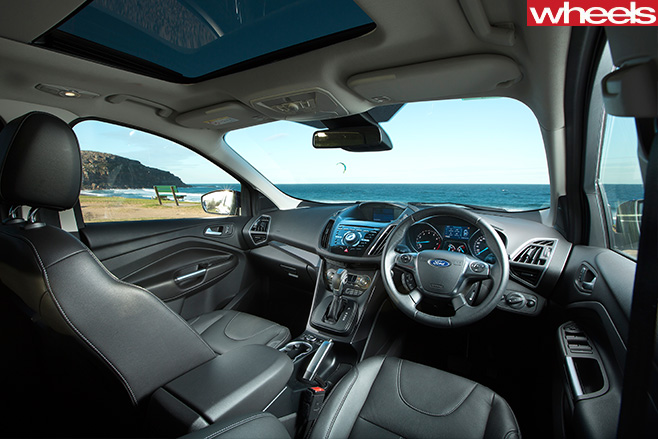
As an all-rounder, yes. The Kuga is a great driver’s SUV, albeit a relatively thirsty one, and pampers its front-seat occupants. But it lacks the thoroughness of the Tucson’s packaging, even though the Ford makes up for a lot with its superb steering and throaty engine.
Its Hiroshima rival is more stylish, more tactile and much more efficient, yet the CX-5 doesn’t quite reach the level of comfort, practicality and driving enjoyment of the Subaru and Hyundai either. Yes, it can be an engaging drive, and it’s definitely a better car than it was last year, but in a fight as tight as this, its few flaws push it down the podium.
So, Hyundai goes from nowhere to a near-match with the Forester. The Koreans might have taken a while to see what it takes to make a really good car, but in AWD 1.6T Highlander guise, the Tucson certainly has it.
Inside: Ford Kuga Titanium Ecoboost
SOME testers disliked the Kuga’s bulky dashboard so much, it would be a deal-breaker, though an update incorporating Ford’s new-gen SYNC2 multimedia screen is on the way. Thick pillars with curved bases restrict vision a little, but steering wheel, seats and driving position are beyond reproach. Manual front passenger seat gets crank-handle height adjustment and side bolsters that dial in and out.
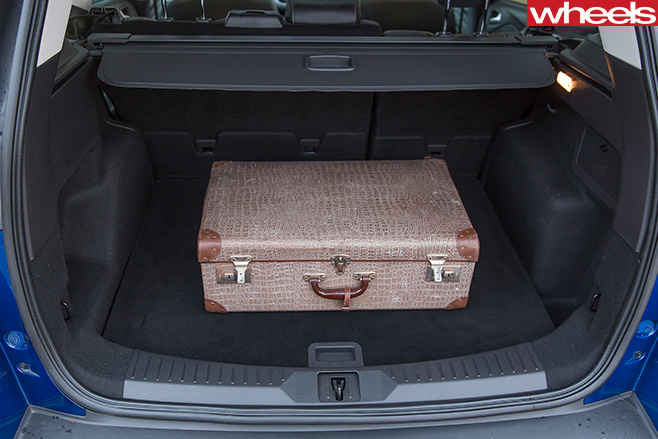
Inside: Hyundai Tucson Highlander
TUCSON’S cabin is clear but characterless. Needs the two-tone trim option (pictured) to overcome its drab plastics, many of which appear scratch-prone. But its upholstery is good quality and its seat comfort is excellent, front and rear. This group’s largest sunroof combines with an airy cabin to make Tucson feel luxuriously roomy. But its centre touchscreen can be confusing and audio quality is average.
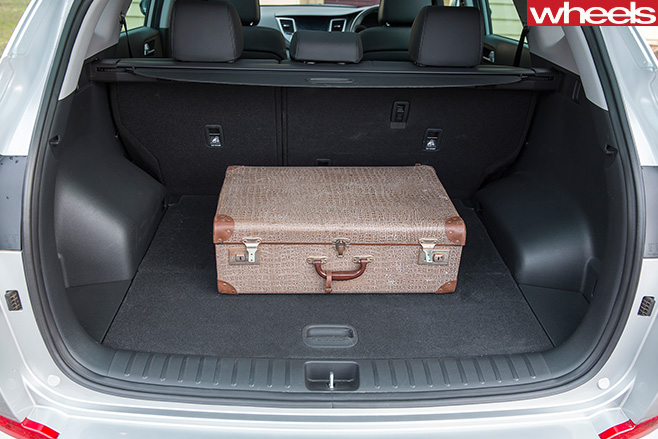
Inside: Mazda CX-5 Grand Touring
Facelifted CX-5 cabin has been transformed from slightly disappointing to class best. Mazda kept the good bits – classy dials, superb steering wheel, quality switchgear – and revamped the centre console, adding its own MZD Connect sat-nav system. No rival can match CX-5’s finish and trim quality, though its seats don’t quite achieve true comfort, and its rear section is a little austere, lacking air vents.
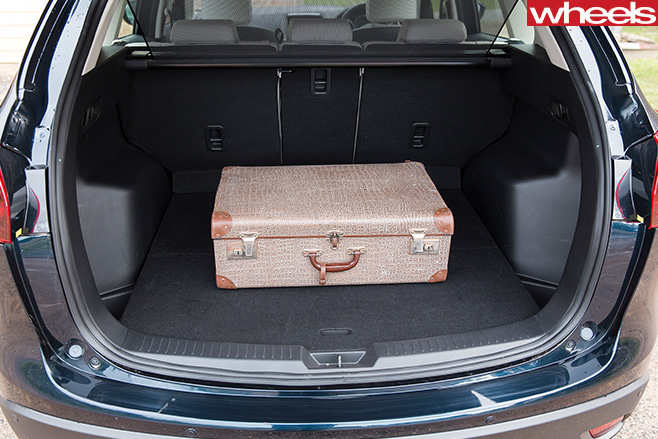
Inside: Subaru Forester XT Premium
IT’S unfortunate Subaru doesn’t devote as much attention to finessing the finer details like Mazda does – cue plasticky power window switches and the budget plastic panel they’re mounted on – but that takes nothing away from Forester’s all-round ability. It might not be the prettiest bauble on the tree, but it’s certainly near the top, with brilliant vision, a superb multimedia interface and outstanding audio quality.
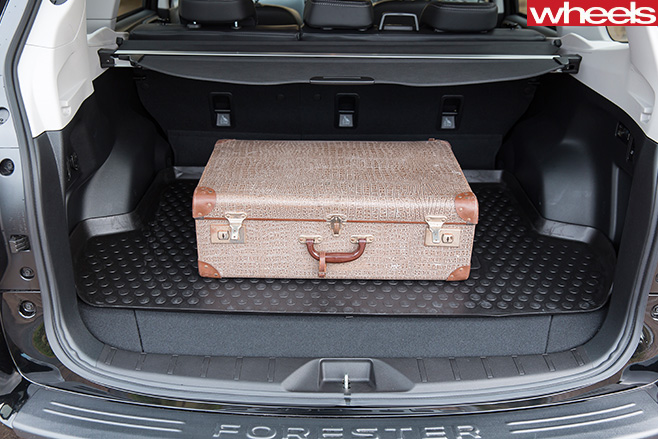
Changing shifts
HAVING a faux-manual mode in an SUV might seem like gimmickry, but you can’t discount the benefits for engine braking. And when your SUV has a sports flavour, a bit of manual action is a nice thing to have.
Despite a lack of steering-wheel paddles, the CX-5’s set-up is the most driver-oriented. Its tip-shift gate works in our favoured style – forward for a downshift, back for an upshift – and it will hold a manually selected gear at redline. It also has an intuitive ‘Sport’ mode that’s so good at pre-empting your driving mood the tip-shift gate is often unnecessary.
The Forester is the only car here to score flappy paddles, though its eight-ratio stepped CVT never feels or sounds as satisfying as an auto with specific gears.
The Kuga’s six-speed auto matches revs on downshifts and mates well with the engine’s muscle, but its Sport mode is little different to regular Drive and its tip-shift (on the side of the gearlever) is awkward and infuriatingly rubbish to use.
The Tucson has a traditional +/– gate next to Drive, but it works in reverse to the Mazda. It also upshifts at redline and won’t downshift early enough when prodded. Its Sport mode is disguised in a ‘Drive Mode’ button near the shift lever that also tweaks steering weight and throttle response, and perks up the dual-clutcher’s shift mapping.
Equipment levels
PAYING $43.5K for the Tucson Highlander buys lots of stuff. It gets a full suite of safety electronics (AEB, lane-keeping and lane-change assist, blind-spot monitoring, rear cross-traffic alert, trailer stability assist and active cruise), as well as leather trim, heated/cooled front seats (10-way electric for driver, 8-way for passenger), keyless entry/start, a huge glass sunroof, and LED lights at both ends (directional at the front).
About the only areas the $4500-dearer Forester XT Premium upstages the Tucson are its wheel paddles and its far superior eight-speaker Harman Kardon stereo. Otherwise, it wears smaller wheels and has a rear camera but no sensors.
The $45K Kuga Titanium gets active park assist and a hands-free power tailgate, but no electric front passenger seat or autonomous electronic safety tech (it’s a $1600 extra, including tyre pressure monitors).
The CX-5 GT saves $100 over the Tucson, but asks more for auto-brake tech and blind-spot monitoring, and doesn’t offer forward collision warning, lane-departure assistance or LED headlights. Small sunroof, too.
Verdict
 HYUNDAI TUCSON HIGHLANDER
HYUNDAI TUCSON HIGHLANDER
Price as tested: $44,085 *Includes metallic paint ($595)
NCAP rating: not tested
Fuel economy: 10.9L/100km (test average)
Acceleration: 0-100km/h: 8.1sec (tested)
Plus: Strong and handsome; entertaining chassis; quality seating; ample room
Minus: Uninspiring engine; plain cabin design; short service intervals
Verdict: 8.0/10
 SUBARU FORESTER XT
SUBARU FORESTER XT
Price as tested: $47,990
NCAP rating: 5 stars (Aus)
Fuel economy: 11.4L/100km (test average)
Acceleration: 0-100km/h: 7.0sec (tested)
Plus: Performance and smoothness; four-up ride; adjustable handling; superb vision
Minus: Utilitarian appearance, outside and in; all-terrain tyres
Verdict: 8.0/10
 FORD KUGA TITANIUM
FORD KUGA TITANIUM
Price as tested: $46,975 *Includes Technology Pack ($1600) and premium paint ($385)
NCAP rating: 5 stars (Aus)
Fuel economy: 12.9L/100km (test average)
Acceleration: 0-100km/h: 7.4sec (tested)
Plus: Handling, steering and body control; excellent front seats; sporty engine
Minus: Packaging niggles; relative thirst; gearshift mechanism; bulky dash
Verdict: 7.5/10
 MAZDA CX-5 GT
MAZDA CX-5 GT
Price as tested: $43,538 *Includes floor mats ($148)
NCAP rating: 5 stars (Aus)
Fuel economy: 10.2L/100km (test average)
Acceleration: 0-100km/h: 8.4sec (tested)
Plus: Slick and efficient; class-best quality and resale; styling presence; gearbox
Minus: Only comes alive when driven hard; firm seats; no rear vents
Verdict: 7.5/10


